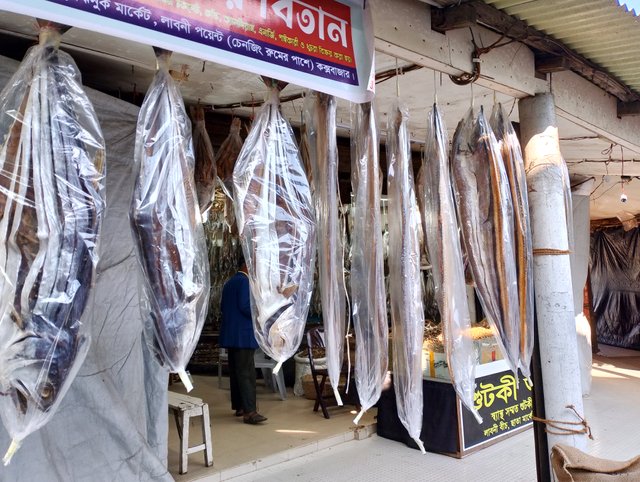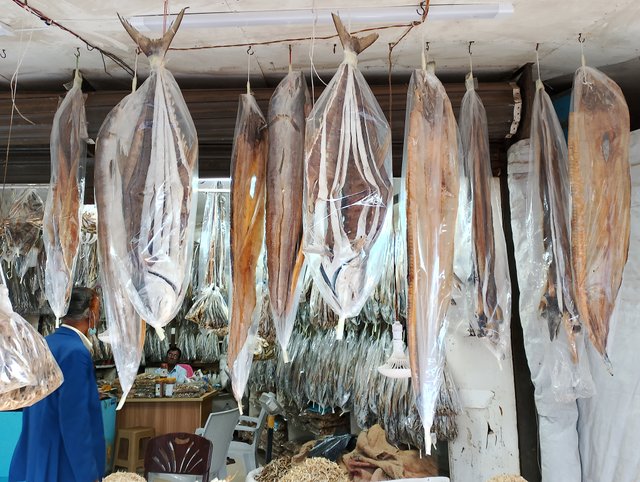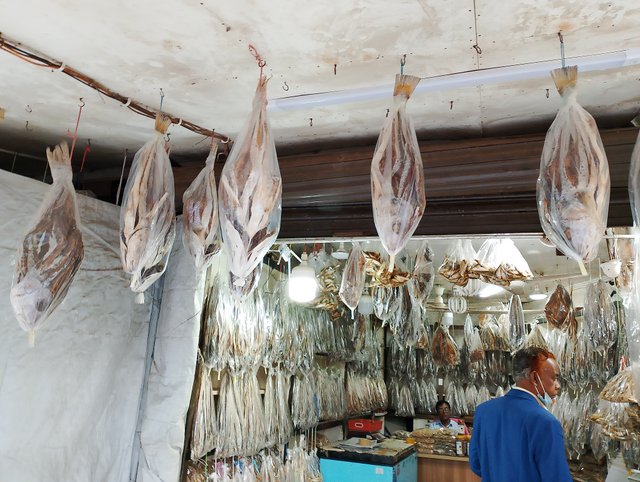The Dry Fish Fair of Cox's Bazar.
Hello dear friends,
I hope you all are doing well and spending a beautiful life with your loved ones. I wish you all happiness and peace.
Cox's Bazar is famous for having the longest sea beach in the world, but another traditional and popular specialty of this place is "shutki"—dry fish. Made from the fresh fish of the Bay of Bengal, this dry fish is loved across Bangladesh and is gaining increasing demand in international markets. Recently, during an office tour to Cox's Bazar, I had the chance to explore this fascinating world of shutki. The experience was truly unforgettable.
Dry fish production is a labor-intensive and time-consuming process. Fish are caught from the vast waters of the Bay of Bengal and first cleaned properly. Then, depending on the type, the fish are cut into pieces. The most important step is to remove the moisture from the fish. For this, the fish are spread on special nets and dried under the open sun. Sometimes they are dried directly on the sand. This drying process usually takes 5 to 7 days.
Large types of fish such as rupchanda (pomfret), loitta (bombay duck), shrimp, coral fish, vetki (barramundi), and pangas are commonly used for making shutki. Local artisans use natural methods to prepare this dry fish without using any chemicals. This authentic taste and quality make Cox's Bazar shutki uniquely popular.
While visiting the shutki market in Cox's Bazar, I saw many different kinds of large dry fish hanging in rows. Some were so big that I was truly amazed. The most common varieties of shutki found here include: loitta shutki, shrimp shutki, rupchanda shutki, coral shutki, pangas shutki, and vetki shutki. Among the small fish varieties are mola, puti, and tangra shutki.
The main dry fish markets in Cox's Bazar are—Fishery Ghat, Bazarghata, New Market, and Sugandha Point. These markets are crowded every day with thousands of people buying shutki. From locals to domestic and foreign tourists, everyone finds it fascinating.
Bangladesh’s shutki is not limited to the local market; it is also exported to many international markets. Countries like the USA, UK, Middle Eastern nations, Malaysia, Singapore, and others import shutki from Cox's Bazar. Especially, Bangladeshi expatriates are the main consumers of this product.
Dry fish is rich in protein, omega-3 fatty acids, and essential minerals. It adds both taste and nutrition to our diet. However, excessive consumption or consuming poor-quality shutki can pose health risks. Therefore, it is wise to choose good brands and ensure quality before buying.
While I was exploring the shutki market, I took some photographs. The large dry fish were wrapped in plastic and hung from above. It felt like entering a kingdom of dry fish! My colleagues were also very excited, and many of them bought some shutki. The local shopkeepers were very friendly and shared with us many interesting facts about the shutki-making process and its history.
Cox's Bazar's shutki is not just food—it is a cultural heritage, a source of local livelihood, and an important part of Bangladesh’s economy. Anyone visiting Cox's Bazar should definitely explore the shutki markets. And always remember, to experience the true taste of shutki, nothing compares to the original dry fish from Cox's Bazar.
Thanks all
| Device | Mobile |
|---|---|
| Model | Realme C- 53 |
| photographer | @joniprins |
| location | Dhaka,Bangladesh |





$upvote80%
Have a blessed day.
Friend, I want to thank you for your post. I found it very interesting, as it describes the importance and the role that dried fish plays in the social and economic life of the "shutki" in that city.
One question: I saw the dried fish wrapped in plastic. Are they sealed or do they have holes for the product to breathe?
I see it's an entire industry and that it's been around for years. From what I've read, it's still almost artisanal. I really enjoyed learning what you shared.
Did you know that you can publish this type of post using the steem-atlas tag?